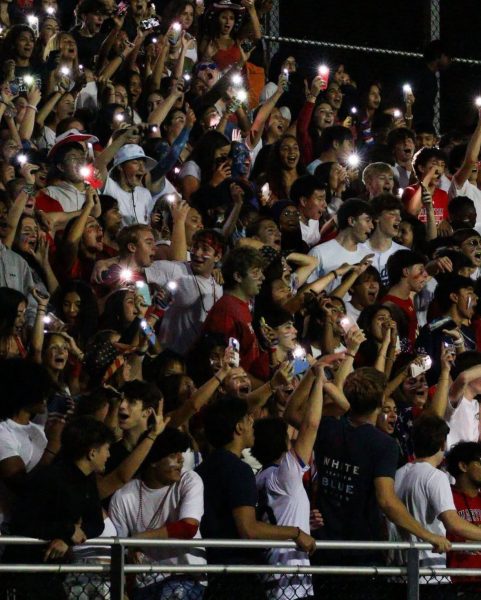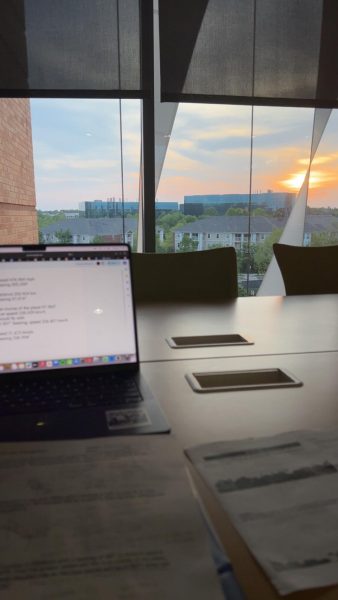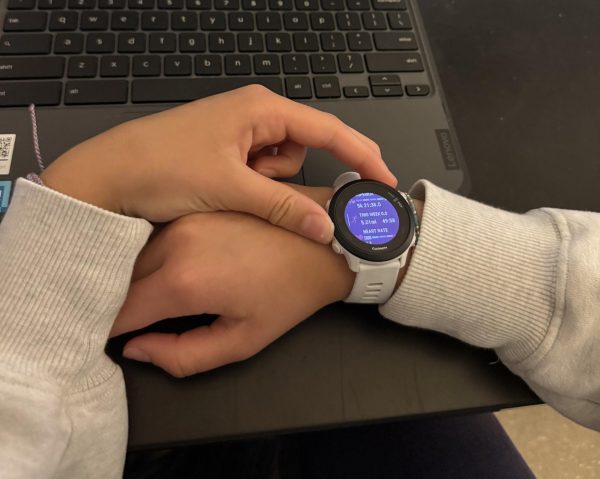We can’t afford to go virtual
When proponents of virtual school make their case for closing schools due to the highly transmissible Omicron variant, they often cite spiking COVID cases. It’s certainly important to recognize that cases have seen a tremendous uptick compared to other peaks. Take, for instance, the following graph:
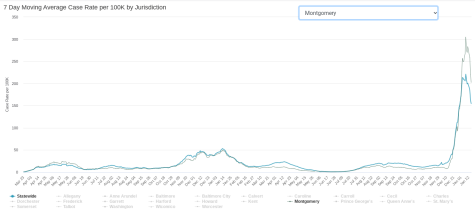
(Data on the “7-day moving average case rate per 100 thousand people” provided by the Maryland COVID-19 Data Dashboard)
The 7-day moving average case rate per 100k in Maryland (the blue line) saw a peak in cases per 100k in late December 2021 that was over 4 times their previously highest peak in January 2021. For Montgomery County (the dark green line), cases per 100k reached over six times their original January 2021 peak. Clearly, despite Maryland having 72% of the total population fully vaccinated (one of the highest vaccination rates in the country) according to the New York Times, Omicron’s transmissibility is increasingly difficult to ignore. Let’s not confuse transmissibility with mortality, though.
Here’s a graph on daily hospital beds used for COVID-19:
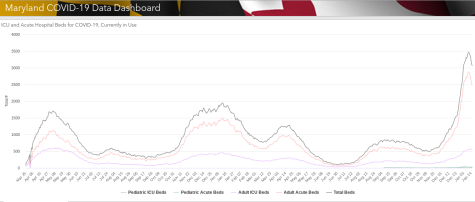
(Data on “ICU and Acute Hospital Beds for COVID-19 currently in use” provided by the Maryland COVID-19 Data Dashboard)
And here’s a graph on daily confirmed and probable deaths in Maryland due to COVID-19:
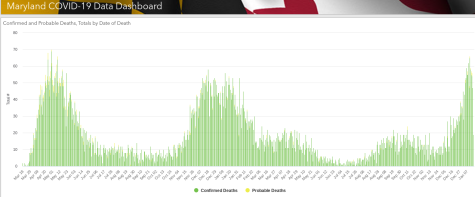
(Data on “Confirmed and Probable Deaths by Date of Death” provided by the Maryland COVID-19 Data Dashboard)
Admittedly, hospitalizations reached record numbers, but have been rising at a slower rate than cases have. Where peak cases saw a four-fold increase compared to their January 2021 peak, hospitalizations saw a 78% increase compared to January 2021 peak. Despite the highest number of COVID cases we’ve seen, peak daily deaths only matched peak deaths from April 2020.
Also, take note of the significant dropoff we are already seeing in all three COVID measurements, indicating that we have (likely) already gone through the worst of the Omicron wave. While it certainly is nothing to shrug off, it provides optimism on two fronts: One, the vaccine is doing its job (reducing risk of severe illness and death), and two, Omicron is less serious than we thought (if you’re vaccinated). And throughout the pandemic, kids have been consistently at a much lower risk for more severe outcomes as a result of COVID than adults are.
Keeping the severity of COVID for kids (or lack thereof) in mind, it makes no sense to unnecessarily close down schools because we have seen the negative effects and unnecessary burdens of long distance learning on kids, families, and schools alike. A McKinsey report proved that distance learning harms more than helps. Students, on average, were left five months behind in math and four months behind in reading by the end of the school year. For the underprivileged, including predominantly Black and predominantly low income schools, students were left behind six months and seven months in math, respectively. A CDC report found that emergency rooms saw a 24% and 31% increase in mental-health related visits for 5-11 year olds and 12-17 year olds, respectively, between 2019 and 2020. And school closures affect the entire family: The New York Times reports that the disparity in labor force participation between men and women only grew during the pandemic in areas that offered remote instruction as more women stayed home to take care of children.
Despite the optimism for the future, we haven’t reached the finish line quite yet. MCPS’ commitment to distributing at-home COVID tests and KN95 masks, as well as their commitment to implementing a test-to-stay program (which, admittedly, is tough to do during a nationwide COVID test shortage), is one step in the right direction to avoid unnecessary quarantining and missed school days. While vaccine mandates certainly generate plenty of controversy, MCPS already has vaccine mandates established to combat other deadly and transmissible diseases (and yes, a COVID vaccine mandate includes one for teachers and bus drivers). With the right safety measures in place, the benefits of closing schools certainly seem closer to zero than the risks of keeping schools open.
Your donation will support the student journalists of Thomas S. Wootton High School. Your contribution will allow us to purchase equipment and cover our annual website hosting costs.
Joaquin Moreno is a 2022 graduate.


